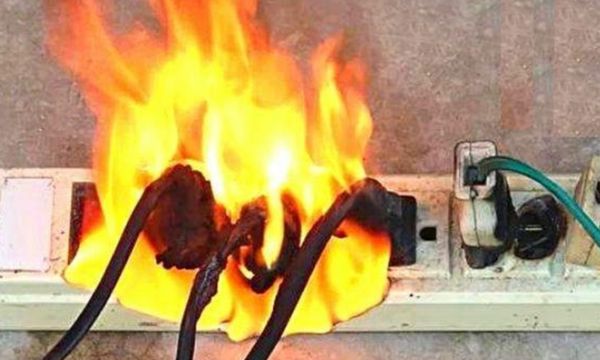
Plugging electrical appliances into power strips is convenient and cost-effective, but did you know that it can come with risks? Overloading a power strip or connecting energy-consuming devices to it can lead to failures, damage to appliances, power outages, and even fires. I learned this the hard way and since then, I’ve been extremely cautious. Let’s take a look at 9 devices that should never be plugged into a power strip.
First, Check the Maximum Power
Before we dive into the list, it’s important to know the maximum power capacity of your power strip. This information is usually indicated on the power cable. To determine if you’re exceeding the limit, add up the power consumption of each device plugged into the power strip. You can find the power consumption information on each device itself.
For example, if your power strip can handle a maximum power of 3500 W and you plug in your oven (2500 W), vacuum cleaner (800 W), and kettle (250 W) simultaneously, you exceed the limit with a total power consumption of 3550 W. In this case, the solution is simple – unplug one of the devices from the power strip to stay within its maximum power threshold. Going beyond the limit can be very dangerous.
The Devices You Should Avoid Plugging
Now, let’s take a look at the specific devices that should never be connected to a power strip.
1. The Oven
Ovens are among the most energy-intensive household appliances. Avoid plugging them into a power strip, even if you don’t use them frequently. Instead, provide a dedicated wall outlet to prevent the risk of dangerous overheating.
2. The Refrigerator
Although refrigerators don’t consume a lot of energy compared to other appliances, they should never be plugged into a power strip. Remember that a refrigerator constantly requires electrical voltage, 24 hours a day. Thus, it’s best to connect them directly to a wall outlet. This applies to freezers as well.
3. The Washing Machine and Tumble Dryer
Washing machines consume an average of 1150 kWh per year, making them highly energy-intensive appliances. Therefore, it’s not recommended to plug them into a power strip. Avoid risks of short circuits and overheating by connecting them to a wall outlet. The same applies to tumble dryers.
4. Auxiliary Heating
While using auxiliary heating devices is fine, it’s important to plug them directly into a wall outlet. These devices tend to overload power strips quickly, so it’s best to avoid using an extension cord.
5. The Microwave
Don’t underestimate the energy consumption of a microwave. On average, it consumes approximately 70 kWh per year. To prevent any issues, avoid plugging it into an extension cord and connect it directly to a wall outlet.
6. The Coffee Maker
Although a coffee maker seems small, it actually consumes a considerable amount of electricity, estimated at 165 kWh per year. Hence, it’s recommended to plug this device directly into a wall outlet.
It’s crucial to exercise caution when using power strips to prevent any potential hazards or damage. By following these guidelines and being aware of the devices that shouldn’t be plugged into a power strip, you can ensure the safety and longevity of your electrical appliances.



